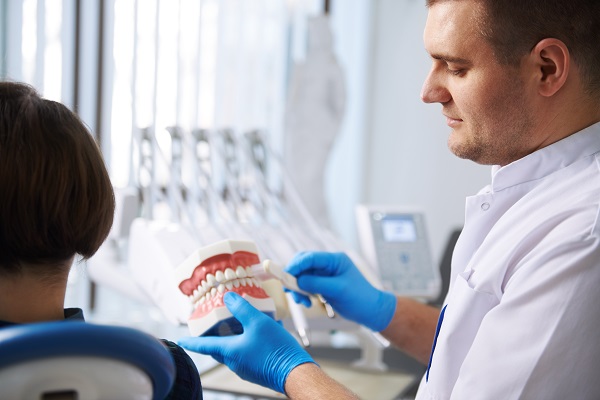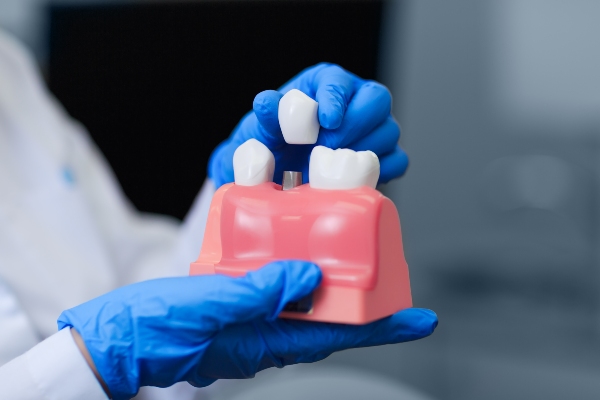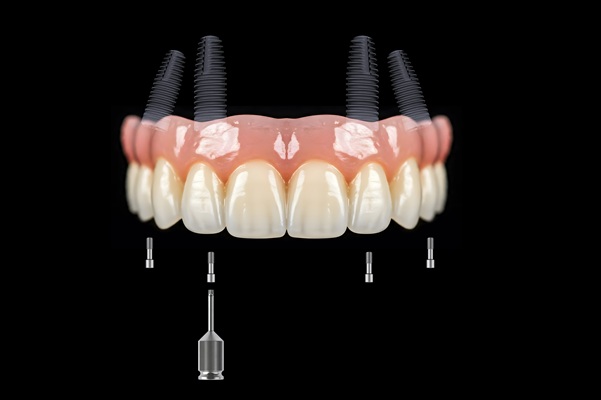4 Questions to Ask a Periodontist

You may have heard of a periodontist, but you may not be quite sure what one is. A periodontist is a dental professional that specializes in the diagnosis, treatment, and prevention of periodontal disease, also known as gum disease. A periodontist has the skills necessary to treat all types of issues relating to the gums, and he or she can also treat associated issues that may occur if the periodontal disease reaches the severe stages.
Questions to ask a periodontist
If you are concerned about gum disease, it is important to seek early treatment. A periodontist can answer any questions you may have about gum disease, the associated symptoms, and treatment options.
1. What is periodontal disease?
Periodontal disease occurs when a buildup of bacteria on the teeth causes an infection of the surrounding gum tissue. There are three stages of gum disease, and if it is caught early, it can be easily treated. Once the infection gets worse and spreads, it is impossible to reverse, and the treatments are generally more invasive.
2. What are the signs of gum disease?
During the early stages, the gums may seem swollen and red. You may also notice frequent bleeding when you brush or floss. As the disease progresses, you may notice pain, and the gums will begin to recede from the teeth. During later stages, the infection can get into the jawbone, which may result in loose teeth that eventually fall out if the infection is not treated. Additional signs and symptoms of periodontal disease include:
- Chronic bad breath
- Toothache
- Pain while chewing
- Pus-filled sores along the gums
- Sensitive teeth due to nerve exposure
3. How do you treat gum disease?
The treatment method that a periodontist uses depends on the severity of the infection. At the first sign of the disease, better brushing and flossing techniques may be all that is needed. If this is not sufficient, a deep cleaning, also known as scaling and root planing, is performed.
During the advanced stages of gum disease, the periodontist may need to perform surgery to get rid of the bacteria and infection. Some options include flap surgery, gum graft surgery, bone graft, guided tissue regeneration, and bone surgery.
4. What are the options if a missing tooth needs to be replaced?
If the gum disease gets so bad, an affected tooth may fall out, or it may need to be extracted due to the infection. There are various options for replacing a tooth, but a dental implant is a popular choice. A periodontist has the training to place an implant as well.
Conclusion
Gum disease is common, and, although it is easily treated in the early stages, it becomes much more challenging to treat once it progresses to the advanced stages. A periodontist can treat the disease at any stage, and he or she can also give the advice to help prevent it from occurring in the first place.
If you have gum disease, it is important to schedule an appointment with a periodontist to get treatment right away. To see what your options are, schedule a consultation with our office.
Check out what others are saying about our dental services on Yelp: Periodontics in San Diego, CA.
Recent Posts
People who are seeking healthy gums but are dealing with challenges with gingivitis can see an expert periodontist, a dental professional who has studied the structures that support the teeth. These include the gums, the jawbone itself, and the ligaments that help hold the teeth in place.Periodontists are trained dentists who focus their attention on…
Wondering what the difference is between a regular dental cleaning procedure and a scaling and root planing procedure? Keeping gum disease at bay is important for all dental patients. Periodontists are dental specialists who focus on preventing, diagnosing and treating gum disease.Thinking about your upcoming scaling and root planing procedure? Periodontists are dental specialists who…
Pinhole gum surgery is a painless, non-invasive way of reversing gum recession. It is a far better alternative than the traditional option: Gum graft surgery. While gum surgery often requires multiple sessions in the dentist’s chair, pinhole periodontal surgery only needs one. There are many other reasons to choose pinhole surgery over a gum graft.…
A socket preservation graft can help speed the healing process after a tooth extraction. However, it is important to take some steps to help aid the healing process. Keeping the area clean will help you avoid an infection. You will also want to limit your diet in the first several days. It is a good…


